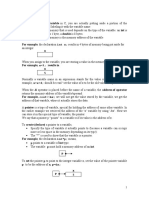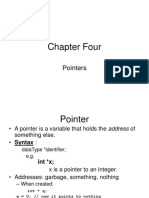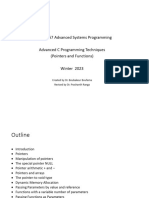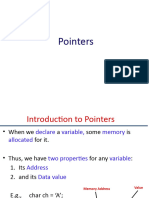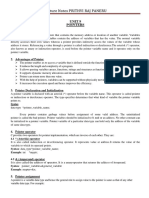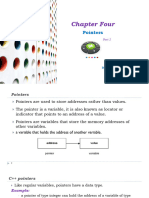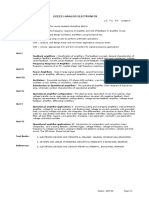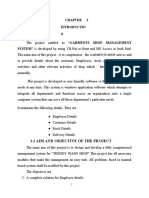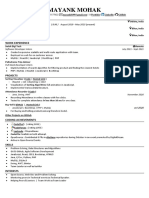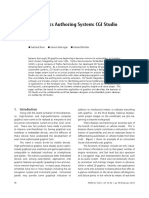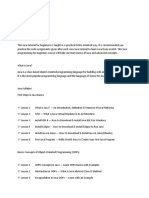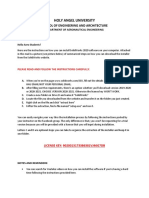0% found this document useful (0 votes)
98 views38 pagesPointers: These Are The Variables That Are Used To Hold The Address of Another Variable
Pointer variables contain the memory address of another variable. They allow indirect access to the value of the variable being pointed to. There are several types of pointers including null pointers, which point to nothing, and void pointers, which can point to objects of any data type. Pointer arithmetic and dereferencing operators allow manipulating the value pointed to. Pointers to members allow accessing data members and calling member functions indirectly through a class object.
Uploaded by
Jatin YadavCopyright
© © All Rights Reserved
We take content rights seriously. If you suspect this is your content, claim it here.
Available Formats
Download as PPT, PDF, TXT or read online on Scribd
0% found this document useful (0 votes)
98 views38 pagesPointers: These Are The Variables That Are Used To Hold The Address of Another Variable
Pointer variables contain the memory address of another variable. They allow indirect access to the value of the variable being pointed to. There are several types of pointers including null pointers, which point to nothing, and void pointers, which can point to objects of any data type. Pointer arithmetic and dereferencing operators allow manipulating the value pointed to. Pointers to members allow accessing data members and calling member functions indirectly through a class object.
Uploaded by
Jatin YadavCopyright
© © All Rights Reserved
We take content rights seriously. If you suspect this is your content, claim it here.
Available Formats
Download as PPT, PDF, TXT or read online on Scribd
/ 38





















